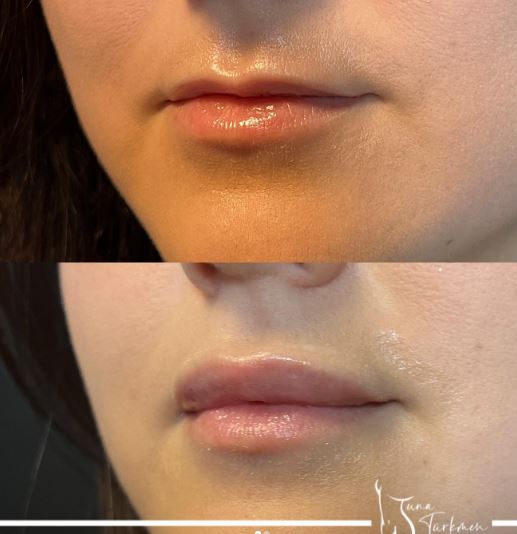What are filling materials? Which one is the most preferred?
Filling materials can be used to replace the fat and skeletal volume loss that occurs on the face over time, to replace the lost volume in order to eliminate some wrinkles, and to fill the wrinkles and grooves.
With the development of technology, the developments in the filling sector have also enabled the use of filling materials with different properties for different regions with many different skin-subcutaneous characteristics.
Although there are many materials used as a basis, the most preferred are hyaluronic acid fillers, which are also an element of human connective tissue. These fillings are highly compatible with tissues and are dissolved by the body within an average of 8-12 months, although it varies from person to person.
Today, it is possible to reduce the signs of aging in many parts of the face, to fill the missing volumes, and to improve the orientation of the face by using filling materials.
Although there are many materials used as a basis, the most preferred are hyaluronic acid fillers, which are also an element of human connective tissue.

With lip filler, your lips can be rounded out to look bigger and more defined. The fillers in our application that are based on hyaluronic acid are safe and friendly to the skin. There is no pain throughout the very easy and safe operation.
Filling applications are used in treatments such as volume loss in the temple area, removal/reduction of deep grooves between the eyebrows, gaining the volume of the cheekbone area, elimination of volume losses around the eyes, forming the chin contour, and advancing the chin tip. It has become the gold standard in the treatment of nasolabial groove and lip thickening.

All filling applications can be performed under examination conditions after the application of local anesthetic cream. The person can continue his normal life after the procedure. Swelling and numbness in the applied area for a few days after the procedure is normal. The net effect is evaluated after the swelling subsides.
How is PRP (Platelet Rich Plasma) Treatment Done?
Platelet Rich Plasma (PRP) is a substance made out of a person's own blood product. This substance, which is typically injected into the treatment area, is made up of several proteins in the serum, platelets that aid in coagulation, and blood serum.
